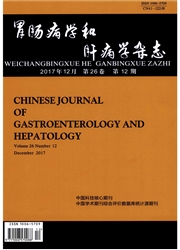

 中文摘要:
中文摘要:
腺泡细胞的死亡是重症急性胰腺炎发病过程中的核心环节,腺泡细胞的死亡方式主要包括凋亡和坏死两种。迄今为止,关于细胞凋亡的信号通路已被研究得较为透彻。相对而言,对另一种细胞死亡机制坏死的研究却知之甚少。新近发现的RIP激酶家族RIP1、RIP3参与并调控了程序性坏死,RIP1-RIP3复合体的形成及其互相磷酸化可作为程序性坏死的特异性指标,因此,对程序性坏死相关蛋白的进一步鉴定及确切分子机制的研究,将对急性胰腺炎发病机制的阐明及新的治疗靶点的提出产生深远影响。
 英文摘要:
英文摘要:
Acinar cell death is the key event in the process of acute pancreatitis, the main mode of acinar cell death included apoptosis and necrosis. So far, the signaling pathways of apoptosis have been studied more thoroughly. In con- trast, another cell death mechanism-necrosis is poorly understood. Recently, RIP1 and RIP3 of the RIP kinase family have been certified to participate and regulate the process of necroptosis. So the further identification of related proteins and the exact molecular mechanism will have profound impact on the clarification of acute pancreatitis as well as the in- troduce of new therapeutic targets.
 同期刊论文项目
同期刊论文项目
 同项目期刊论文
同项目期刊论文
 Development of a Novel Model of Hypertriglyceridemic Acute Pancreatitis in Hamsters Protective Effec
Development of a Novel Model of Hypertriglyceridemic Acute Pancreatitis in Hamsters Protective Effec 期刊信息
期刊信息
